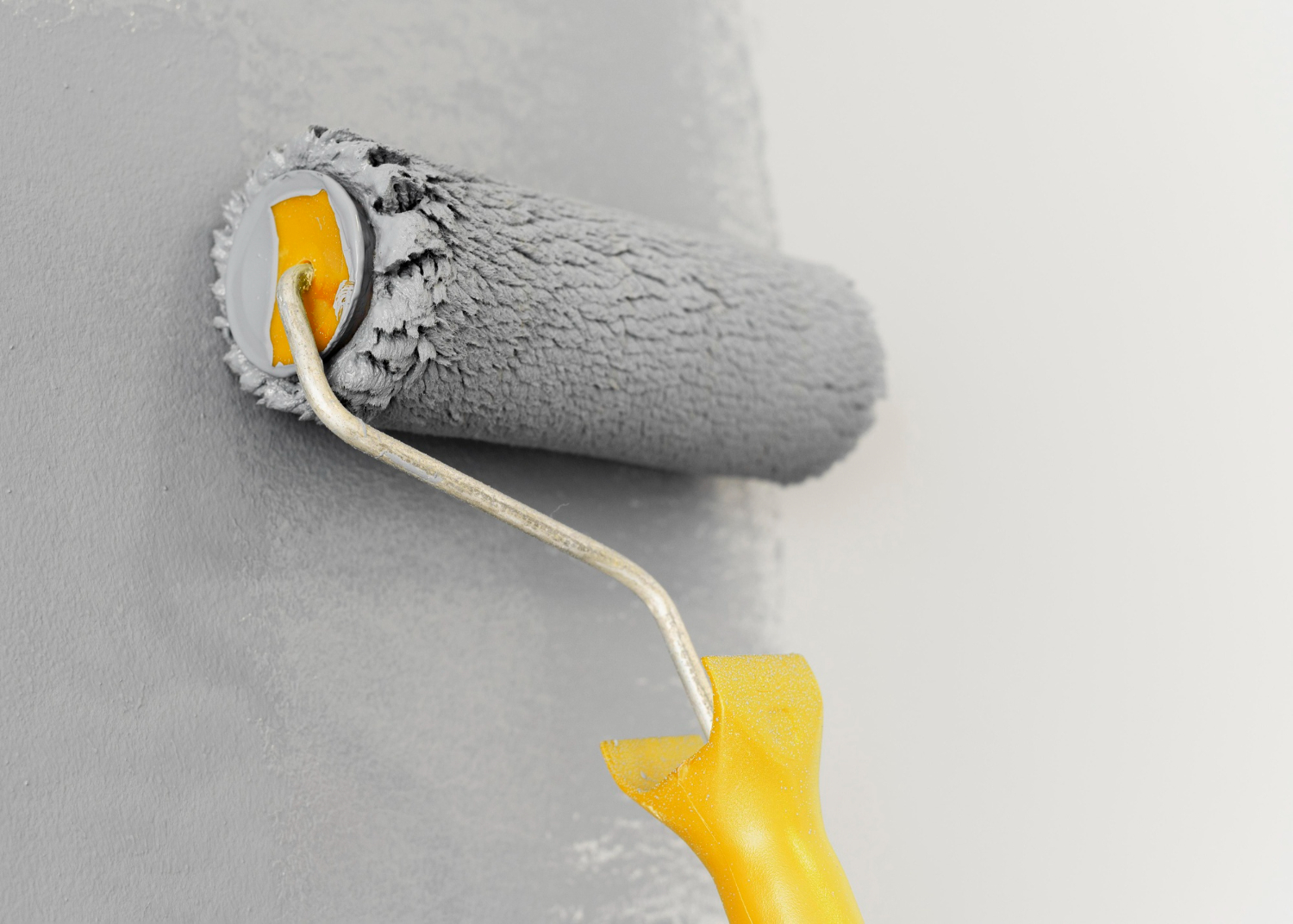
Concrete wall paint is a popular choice for both residential and commercial properties, offering durability, creativity, and elegance appeal. Maintaining concrete wall paint is essential to preserve its fresh and vibrant appearance over time. This comprehensive guide covers the best practices for maintaining your concrete wall paint, focusing on exterior concrete wall paint, selecting the right colors, and using textured finishes. By following these tips, you can ensure that your walls remain visually appealing and protected from the elements.
Proper maintenance of concrete wall paint is crucial for several reasons. Firstly, it extends the lifespan of the paint, reducing the need for frequent reapplication. Secondly, well-maintained paint helps protect the underlying concrete from moisture, UV rays, and other environmental factors. Lastly, regular upkeep keeps your walls looking fresh and vibrant, enhancing the overall elegance of your property. Ignoring maintenance can lead to peeling, fading, and other issues that detract from the appearance and integrity of your walls.
Maintaining concrete wall paint involves several key steps. Regular cleaning is essential to remove dirt, dust, and grime that can accumulate on the surface. Using a mild detergent and a soft brush or sponge, gently clean the walls to avoid damaging the paint. For stubborn stains, a mixture of water and vinegar can be effective. Avoid using harsh chemicals or abrasive tools that can strip the paint or scratch the surface.
In addition to cleaning, inspecting the walls periodically for signs of wear and tear is important. Look for cracks, chips, or peeling paint, and address these issues promptly to prevent further damage. Touching up small areas with matching paint can help maintain a uniform appearance.
For outdoor surfaces, selecting the right paint ensures durability and resilience against the elements. Quality exterior paints are formulated to withstand weather extremes, providing long-lasting protection and maintaining vibrant colors over time. They offer superior adhesion to concrete, ensuring a smooth and even finish that improves the curb appeal of your property. Properly applied, these paints create a barrier against moisture, UV rays, and environmental pollutants, safeguarding your walls for years of enjoyment.
Regular Inspections and Cleaning
Exterior concrete wall paint is exposed to harsher conditions compared to interior walls, making regular inspections and cleaning even more critical. Environmental factors such as rain, wind, and sunlight can cause the paint to deteriorate over time. Conducting routine inspections allows you to identify and address any issues early on.
To clean exterior walls, use a garden hose to rinse off loose dirt and debris. For more thorough cleaning, a pressure washer can be effective, but use it on a low setting to avoid damaging the paint. Be sure to check for any cracks or gaps in the paint and seal them to prevent water infiltration.
Repainting and Touch-Ups
Over time, even the best-maintained exterior concrete wall paint may require touch-ups or a fresh coat of paint. When repainting, choose a high-quality exterior paint specifically designed for concrete surfaces. This type of paint is formulated to withstand outdoor conditions and provide long-lasting protection.
Before repainting, prepare the surface by cleaning it thoroughly and removing any loose or flaking paint. Apply a primer if needed to ensure good adhesion of the new paint. Finally, use a paint roller or sprayer for an even application, and follow the manufacturer’s instructions for drying times between coats.
Choosing colors for your concrete walls allows you to personalize your space with a wide range of shades and hues. From quite neutrals to bold importance, the right color can transform the spirit of a room or exterior area. Consider the natural light and surrounding decor when selecting colors to achieve a harmonious and inviting atmosphere. Quality paints offer rich pigments and durable finishes that enhance the aesthetic appeal while providing long-lasting protection against wear and tear.
Selecting the right concrete wall paint colors is crucial for achieving the desired aesthetic for your space. Neutral colors like gray, beige, and white are popular choices for a modern, clean look. These colors also tend to age well and require less frequent touch-ups.
For a more vibrant or unique appearance, consider using bold colors or a combination of complementary shades. When choosing colors, consider the existing decor and overall style of your property. Test paint samples on a small area to see how they look in different lighting conditions before making a final decision.
In addition to elegance, practical considerations should guide your choice of wall paint colors. Lighter colors can help reflect sunlight, keeping the interior of your building cooler and potentially reducing energy costs. Darker colors, on the other hand, may absorb more heat but can add a striking contrast and depth to your walls.
Consider the surrounding environment when choosing exterior paint colors. For example, if your property is located in a wooded area, earthy tones might blend better with the natural surroundings. In urban settings, bold colors can make a statement and stand out.
Textured concrete wall paint adds depth and character to any space with its tactile appeal. It creates visual interest and can hide imperfections on the surface, offering a creative solution for interior and exterior walls alike. Various textures, such as smooth, rough, or patterned finishes, allow for creative expression and customization to suit different design preferences. Textured paint improves the spirit of a room by adding a unique dimension that complements architectural elements and decor.
Textured concrete wall paint adds dimension and character to your walls, creating a unique visual effect. It can also help mask minor imperfections in the concrete surface, such as small cracks or uneven areas. Textured paint is available in various finishes, including smooth, sandy, and stone-like textures, allowing for creative customization.
Applying textured concrete wall paint requires different techniques compared to regular paint. Start by preparing the surface, ensuring it is clean and free of any loose debris. Use a specialized roller or trowel to apply the textured paint, following the manufacturer’s instructions for the best results.
For a more pronounced texture, apply multiple layers or use different application tools to create patterns and designs. Practice on a small area first to get a feel for the technique and ensure you achieve the desired effect.
Proper maintenance of wall paint is essential for keeping your walls looking fresh and vibrant. By following best practices for cleaning, inspecting, and touching up your walls, you can extend the lifespan of your paint and protect your investment. Whether you're maintaining exterior concrete wall paint, choosing the right colors, or experimenting with textured finishes, these tips will help you achieve beautiful and long-lasting results. With regular care and attention, your concrete walls can remain a stunning feature of your property for years to come.
1. How often should I clean my concrete wall paint?
Regular cleaning every 3-6 months is recommended to keep your concrete wall paint looking fresh and free of dirt.
2. Can I use regular paint on concrete walls?
No, it's best to use paint specifically designed for concrete surfaces to ensure proper adhesion and durability.
3. What should I do if my concrete wall paint starts to peel?
Address peeling paint promptly by cleaning the area, removing loose paint, and applying touch-up paint or a fresh coat as needed.
4. How can I choose the right color for my concrete wall paint?
Consider both aesthetic and practical factors, such as the existing decor, lighting conditions, and environmental surroundings, when choosing colors.
5. Is textured concrete wall paint difficult to apply?
Textured paint requires specific application techniques and tools, but with practice, it can be applied effectively to create unique finishes.












